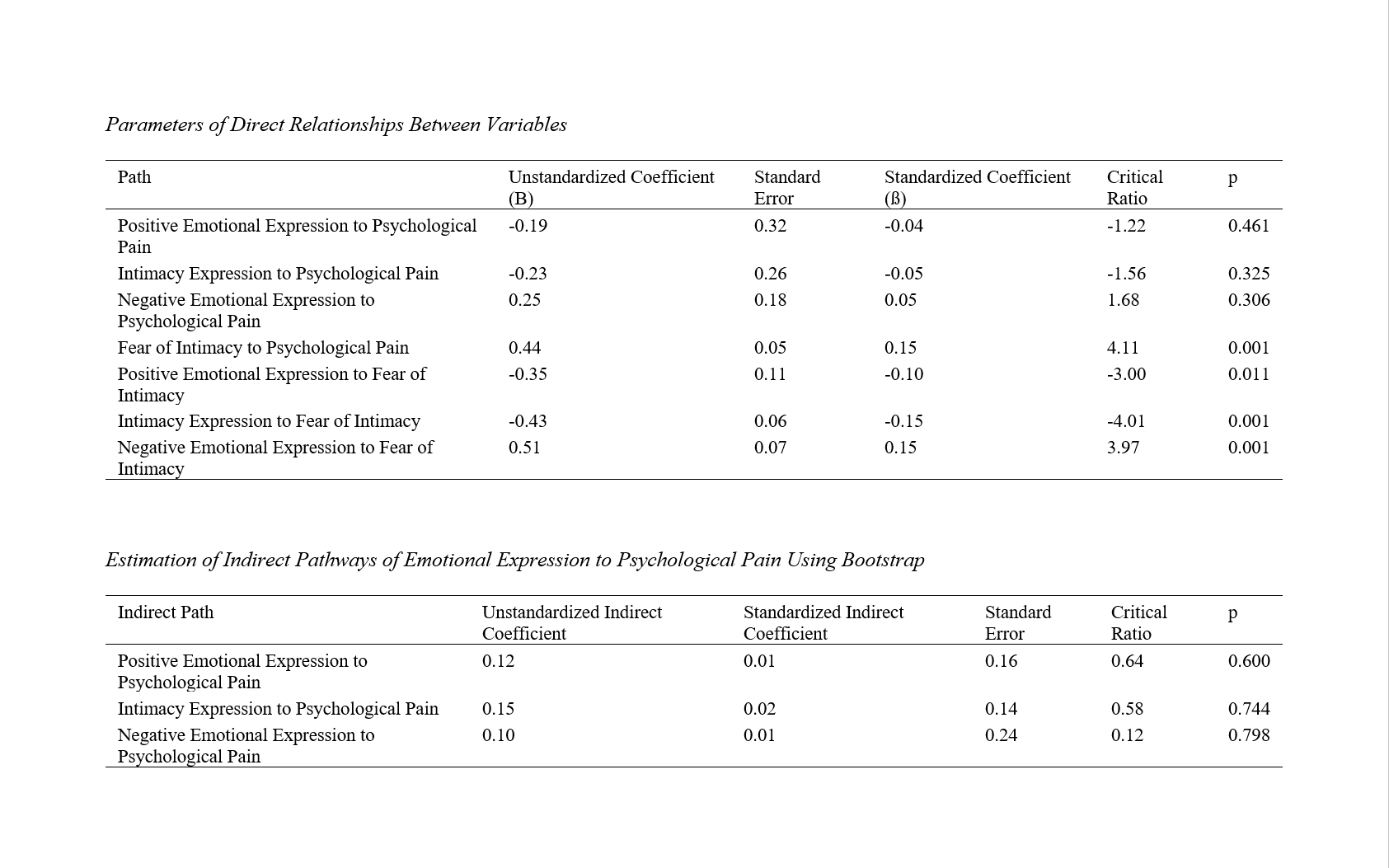Prediction of Psychological Pain Based on Emotional Expression with the Mediation of Fear of Intimacy in Girls with Emotional Breakup Experience
Keywords:
psychological pain, emotional expression, fear of intimacy, emotional breakup experience, girlsAbstract
Objective: The aim of the present study was to predict psychological pain based on emotional expression with the mediation of fear of intimacy in girls with emotional breakup experience.
Methods: The research design was applied in terms of purpose and descriptive-correlational in terms of method. The statistical population of the study included girls aged 20 to 35 with emotional breakup experience in Tehran in 2020, of whom 392 were selected using the convenience sampling method. They responded to the Auerbach and Mikulincer (2003) Mental Pain Questionnaire, the King and Emmons (1990) Emotional Expression Questionnaire, and the Descutner and Thelen (1991) Fear of Intimacy Scale. Data were analyzed using structural equations and SPSS and AMOS software.
Findings: The findings showed that the direct path coefficient of fear of intimacy (ß = 0.15, p < 0.01) to psychological pain was positive and significant, but the path coefficients of the types of emotional expression to psychological pain were not significant (p > 0.05). The direct path coefficients of positive emotional expression (ß = -0.10, p < 0.05) and expression of intimacy (ß = -0.15, p < 0.01) to fear of intimacy were negative and significant, while the path coefficient of negative emotional expression (ß = 0.15, p < 0.01) to fear of intimacy was positive and significant. The indirect path coefficients of the types of emotional expression to psychological pain in girls with emotional breakup experience through fear of intimacy were not significant (p > 0.05).
Conclusion: The results indicated that although fear of intimacy neutralized the effects of different types of emotional expression on psychological pain in girls with emotional breakup experience, it did not mediate the relationship between the types of emotional expression.
Downloads

Downloads
Additional Files
Published
Submitted
Revised
Accepted
Issue
Section
License

This work is licensed under a Creative Commons Attribution-NonCommercial 4.0 International License.




















